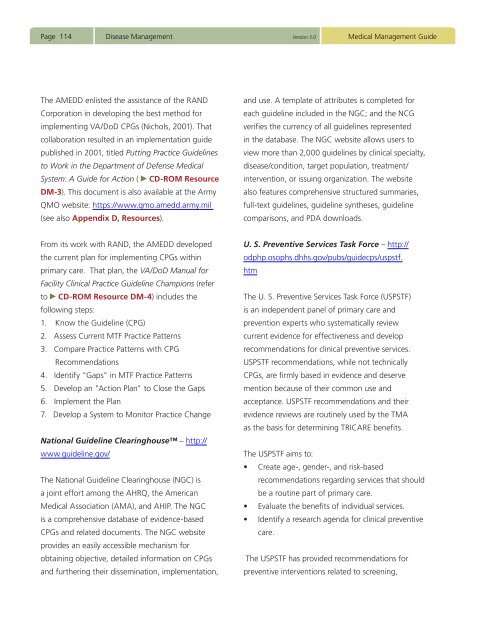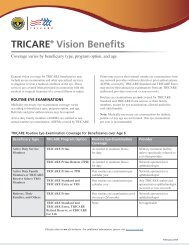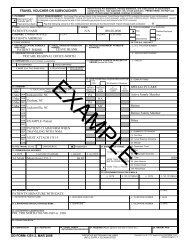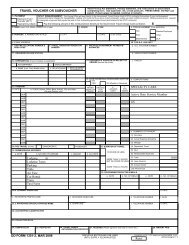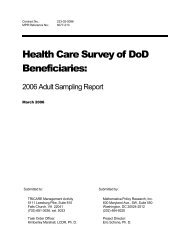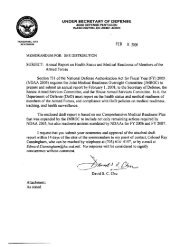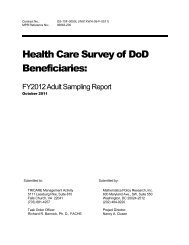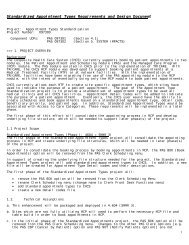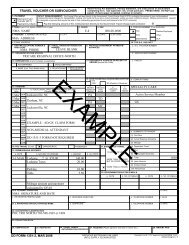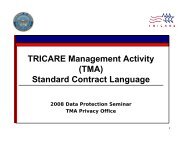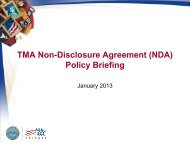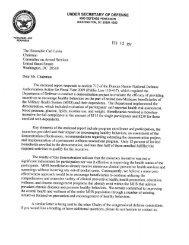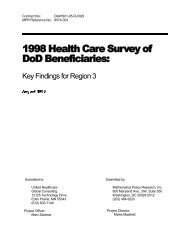Medical Management Guide, 2009, Version 3.0 - Tricare
Medical Management Guide, 2009, Version 3.0 - Tricare
Medical Management Guide, 2009, Version 3.0 - Tricare
- No tags were found...
You also want an ePaper? Increase the reach of your titles
YUMPU automatically turns print PDFs into web optimized ePapers that Google loves.
Page 114Disease <strong>Management</strong> <strong>Version</strong> <strong>3.0</strong><strong>Medical</strong> <strong>Management</strong> <strong>Guide</strong>The AMEDD enlisted the assistance of the RANDCorporation in developing the best method forimplementing VA/DoD CPGs (Nichols, 2001). Thatcollaboration resulted in an implementation guidepublished in 2001, titled Putting Practice <strong>Guide</strong>linesto Work in the Department of Defense <strong>Medical</strong>System: A <strong>Guide</strong> for Action ( CD-ROM ResourceDM-3). This document is also available at the ArmyQMO website: https://www.qmo.amedd.army.mil(see also Appendix D, Resources).and use. A template of attributes is completed foreach guideline included in the NGC; and the NCGverifies the currency of all guidelines representedin the database. The NGC website allows users toview more than 2,000 guidelines by clinical specialty,disease/condition, target population, treatment/intervention, or issuing organization. The websitealso features comprehensive structured summaries,full-text guidelines, guideline syntheses, guidelinecomparisons, and PDA downloads.From its work with RAND, the AMEDD developedthe current plan for implementing CPGs withinprimary care. That plan, the VA/DoD Manual forFacility Clinical Practice <strong>Guide</strong>line Champions (referto CD-ROM Resource DM-4) includes thefollowing steps:1. Know the <strong>Guide</strong>line (CPG)2. Assess Current MTF Practice Patterns3. Compare Practice Patterns with CPGRecommendations4. Identify "Gaps" in MTF Practice Patterns5. Develop an "Action Plan" to Close the Gaps6. Implement the Plan7. Develop a System to Monitor Practice ChangeNational <strong>Guide</strong>line Clearinghouse – http://www.guideline.gov/The National <strong>Guide</strong>line Clearinghouse (NGC) isa joint effort among the AHRQ, the American<strong>Medical</strong> Association (AMA), and AHIP. The NGCis a comprehensive database of evidence-basedCPGs and related documents. The NGC websiteprovides an easily accessible mechanism forobtaining objective, detailed information on CPGsand furthering their dissemination, implementation,U. S. Preventive Services Task Force – http://odphp.osophs.dhhs.gov/pubs/guidecps/uspstf.htmThe U. S. Preventive Services Task Force (USPSTF)is an independent panel of primary care andprevention experts who systematically reviewcurrent evidence for effectiveness and developrecommendations for clinical preventive services.USPSTF recommendations, while not technicallyCPGs, are firmly based in evidence and deservemention because of their common use andacceptance. USPSTF recommendations and theirevidence reviews are routinely used by the TMAas the basis for determining TRICARE benefits.The USPSTF aims to:• Create age-, gender-, and risk-basedrecommendations regarding services that shouldbe a routine part of primary care.• Evaluate the benefits of individual services.• Identify a research agenda for clinical preventivecare.The USPSTF has provided recommendations forpreventive interventions related to screening,


